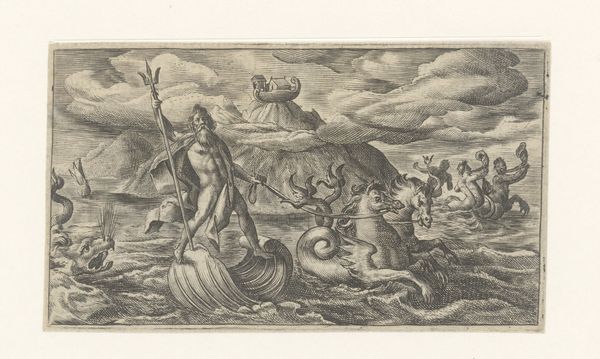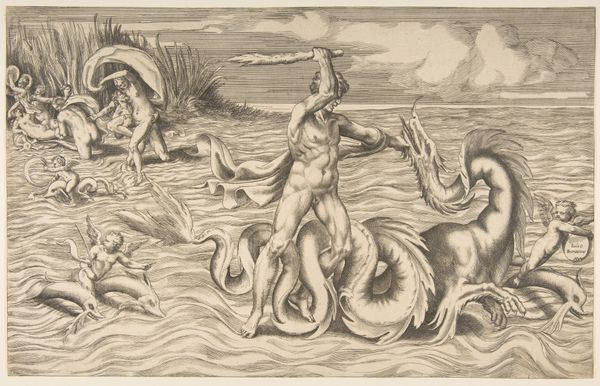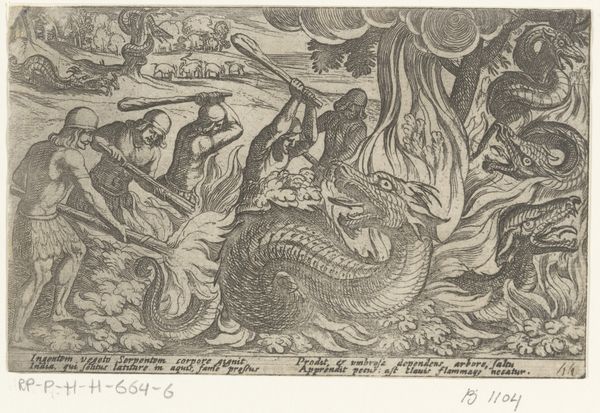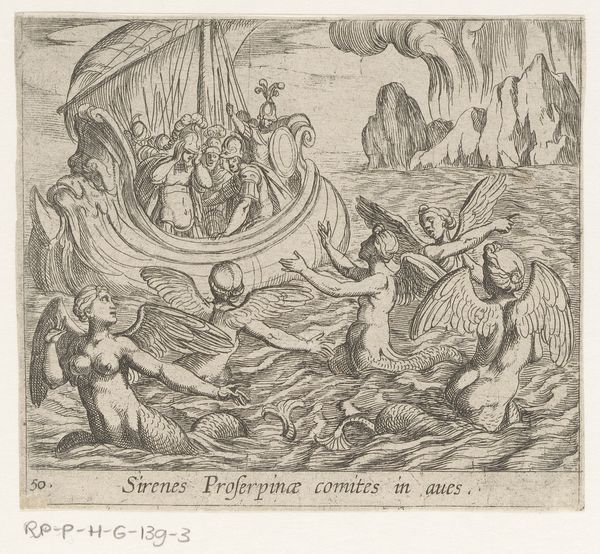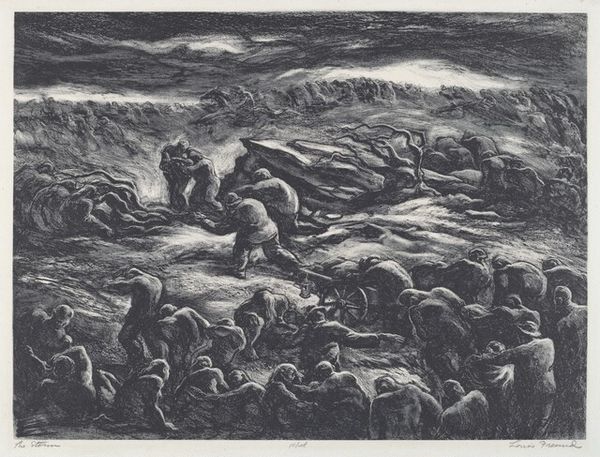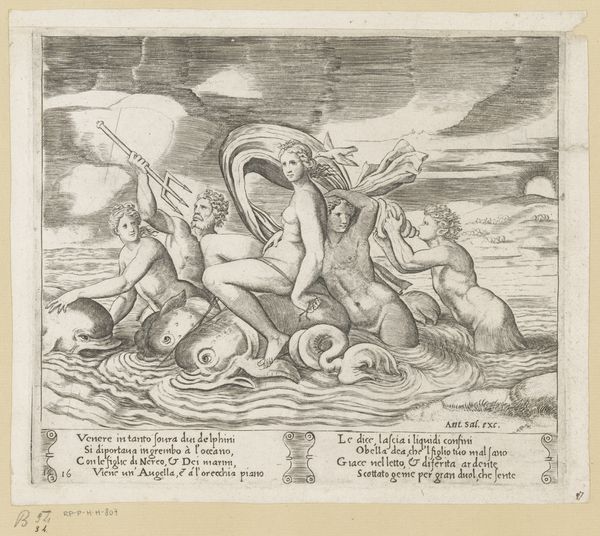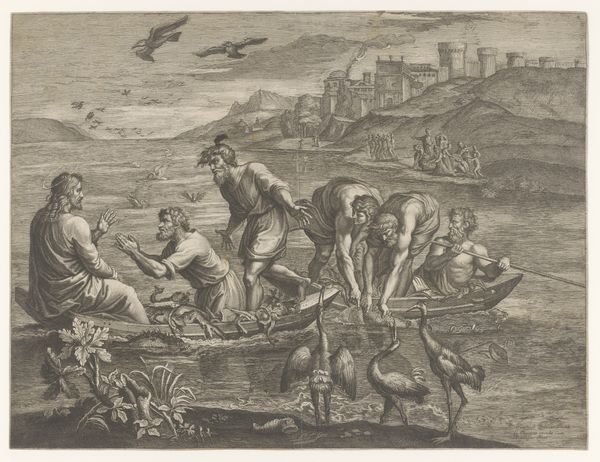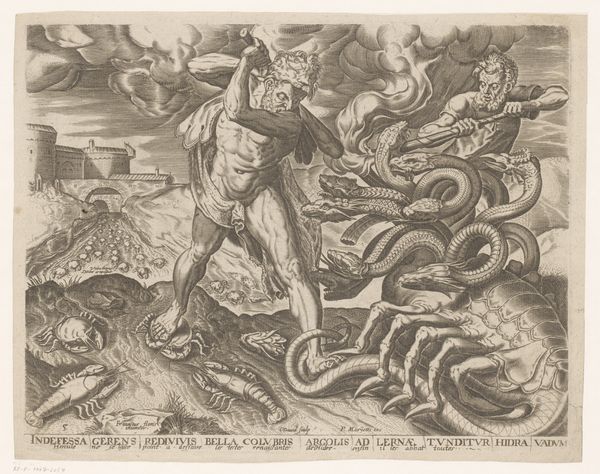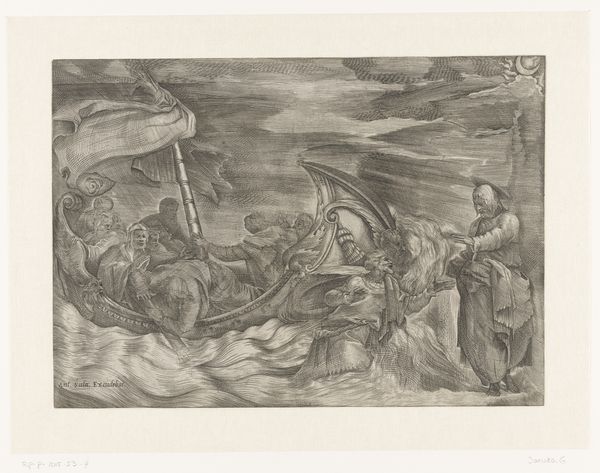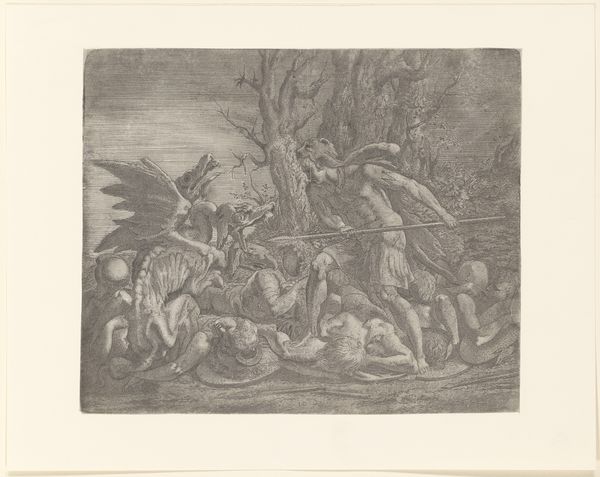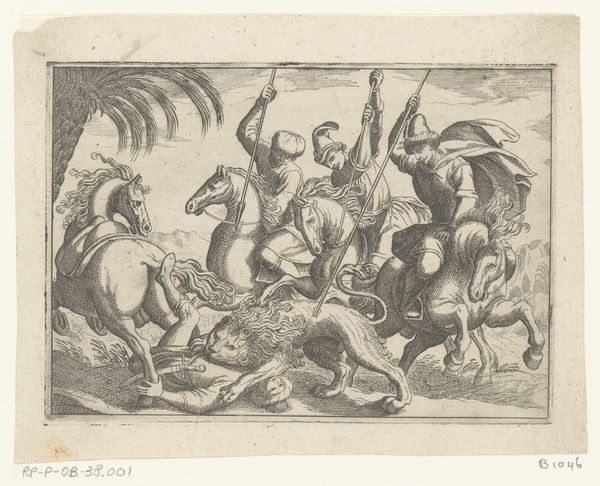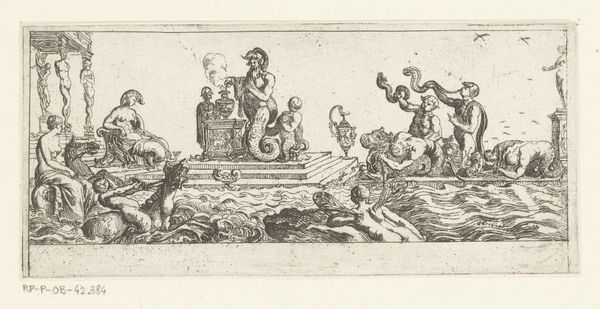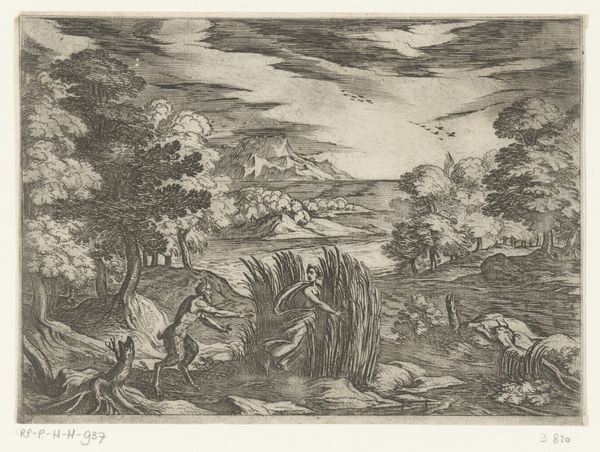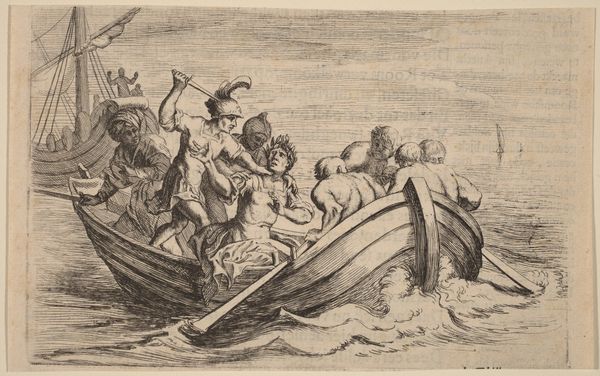
#
pen drawing
#
pen illustration
#
pen sketch
#
junji ito style
#
personal sketchbook
#
ink drawing experimentation
#
pen-ink sketch
#
pen work
#
sketchbook drawing
#
sketchbook art
Dimensions: height 132 mm, width 193 mm
Copyright: Rijks Museum: Open Domain
Editor: This is "Water," a pen drawing made sometime between 1565 and 1630 by Antonio Tempesta. It's currently housed in the Rijksmuseum. The chaotic composition and the mythical figures create a really unsettling feeling, but what’s really going on here? How do you interpret this work? Curator: This piece, to me, speaks volumes about the historical anxieties surrounding natural resources, particularly water, and how they were visualized during a period of burgeoning globalization and maritime exploration. Tempesta created this striking representation of "Water", it can be argued that this engraving, brimming with marine deities and monstrous sea creatures, isn't just an illustration but a reflection of the 16th and 17th century European worldview. What do you notice about the dominance of the human figure, in relation to the monstrous sea creatures? Editor: Well, they seem to be controlling, almost taming the beasts, channeling water and directing its power. So, is this maybe about man's control over nature? Curator: Precisely. It underscores the period’s colonial ambitions and the intertwined exploitation of both natural resources and the bodies of marginalized peoples, don’t you think? Tempesta, consciously or unconsciously, depicted an emerging ideology where control over resources translated to power and domination. Editor: That makes so much sense when you think about the historical context. It’s not just a mythical scene; it’s a statement about power. Curator: Exactly. By engaging with the imagery through a lens of critical theory, we unveil layers of meaning far beyond the immediate visual spectacle. Editor: I hadn't considered that! I will now look at 16th-century art in a new way. Thank you.
Comments
No comments
Be the first to comment and join the conversation on the ultimate creative platform.
